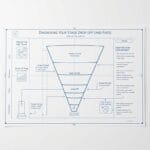A world of online shopping that’s getting busier by the day—it’s hard to make a difference. Take, for instance, an online store offering uniquely handmade jewelry. You put your heart into making beautiful pieces, but the website traffic just crawls, and the sales aren’t that pleasing. Here’s where advanced e-commerce SEO techniques come in handy. Boost your online store, convert prospects into customers, and enjoy flourishing business outcomes. Let’s do that with some advanced e-commerce SEO strategies to help in the process.
Advanced E-commerce SEO—Getting to Grips
E-commerce SEO is the process of optimizing one’s online store for better rankings in search engine results pages. While basic SEO covers core practices, such as keyword research and on-page optimization, advanced e-commerce SEO goes much deeper into specific tactics that might give an online store a competitive edge.
What are some deep strategies in keyword research for e-commerce?
Competitor Analysis: You see what your competitors are targeting from their sites. Tools like SEMrush and Ahrefs will help you understand what keywords your competitors rank for. That is where you can get ideas for new keyword opportunities that you might have missed.
Customer-Centric Keywords: Think about what your customers might be searching for across all the various stages of their buyer’s journey. There are a host of tools, such as AnswerThePublic, that will help you unearth long-tail keywords and questions more pertinent to products.
LSI Keywords: Latent Semantic Indexing keywords are terms related to the main keyword. SERPs use latent semantic indexing to establish the context surrounding your content. It will improve your ranking for a wider set of search terms by incorporating LSI keywords into your copy.
How do I SEO a product page?
Unique Product Descriptions: Never take the word of the manufacturer. Inclusion of relevant keywords naturally within the descriptions of your products—already unique in their details—is very useful to customers and any search algorithm.
Rich Snippets: Integrate schema markup into the pages of your products, and rich snippets will show right in search results information like reviews, ratings, prices—everything.
High-Resolution Images and Videos: Add high-resolution images, videos, and remember to optimize alt text for all images with the target keywords of your products. This will bring more visibility to the image assets in the image search results.
How does technical SEO help in e-commerce?
Technical SEO plays a huge role in the e-commerce website due to its structure. Technical SEO is going to optimize the back end of the website, which makes it easier to crawl and index for the search engines.
Site Speed: Be sure that the website is running at a decent speed. Utilize Google PageSpeed Insights for highlighting and resolving issues that are hampering your site’s speed.
Mobile Optimisation: Your website needs to be mobile-friendly. With the growing ratio of mobile shoppers, responsive design is quite necessary for a brilliant user experience.
URL Structure: This provides clear and descriptive URLs and avoids random strings of numbers and letters. Instead, create URLs that include relevant keywords and are readable.
How Do I Optimize Category Pages for Better Rankings?
Descriptive Category Titles and Descriptions: Category pages should have titles and descriptions that are clear and rich in keywords. This makes it easier for search engines to understand what your pages are about and gives them a better ranking.
Internal Linking: This will offer linking to relevant products and subcategories from within your category pages. It will help in distributing the link equity throughout the site, and users also get to have perfect navigation.
User-Generated Content: Ask customers for reviews and ratings on your category pages. Not only will this add some fresh content, but it will also instill confidence in potential buyers.
What are some really effective e-commerce link-building strategies?
Guest Blogging: Guest blog on other relevant industry topicals, with links pointing to your exact product pages or categories. This drives traffic, and helps enhance the authority of your website.
Influencer Partnerships: You can work with influencers within your industry to promote your products and link back to your website. Doing this may end up creating high authority backlinks and increasing brand visibility.
Broken Link Building: Look for broken links in other websites relevant to your products. Inform the site owners and offer to update the broken links with a link to your pertinent pages.
How do I use quality content creation for e-commerce SEO?
Blogging: Create a blog on your e-commerce site where you should, from time to time, publish relevant content concerning your products and industry. Use long-tail keywords to attract targeted traffic.
Guides and Tutorials: Elaborate guides to how-to tutorials about the common questions and problems your customers are facing. This helps your site become an authority in its niche and brings in organic traffic.
User-Generated Content: Allow clients to share their experiences with products through reviews, testimonials, and social media posts. It is best to share this on the website for building trust and allowing search engines to index new content.
How do I get my website conversion-optimised?
Genuine call-to-actions (CTAs): Clear, compelling CTAs that really illustrate to the visitor what their next steps should be in completing a sale. This is an area that may stand out visually, but should be distinctively different across all key areas of a website.
Signals of trust: Customer reviews, testimonials, security badges—all these things can help give one’s buyer the confidence to make the buying decision.
Simplify checkout: Checkout should be made easy and hassle-free. There should be the least number of steps to complete an order, and there has to be more than one payment option.
What are some deep analytics techniques in e-commerce?
Conversion Rate Optimisation: Tools like Google Analytics and Hotjar would help in the analysis of user behavior on the site. Identify the places where visitors just drop off and then optimise those pages to have better conversion rates.
A/B Testing: Conduct A/B testing of versions of your product pages, CTAs, etc. Results permit data-driven drive to make decisions that would improve the performance of your site.
Customer Segmentation: Personalisation by customer behaviour and preferences. Tailor your marketing to ensure relevant products and offers match with target segments.
How do I leverage social proof to enhance e-commerce SEO?
Customer Reviews and Testimonials: Obtain reviews and testimonials about the services from your customers and post them on your website. Bring out the positive feedback you are getting for your products, either through product pages or through any marketing campaign.
Social Sharing Buttons: Put social media buttons on the product detail pages. The buttons will share how many shares and likes are received, thus giving a popular feel for other users and creating trust in them.
Influencer Endorsements: Partner with influencers who will endorse your products. Feature their endorsements on your website and social media outlets while tapping into their credibility and reach.
Mastering advanced e-commerce SEO techniques is the key to unlocking a store’s potential on the Internet. In-depth keyword research, product and category page optimisation, content marketing, and technical SEO—these are all strategies to guide better search rankings, drive more visitors, and convert them into loyal customers. Never forget that SEO does not end; experimentation, analysis, and optimisation should be done consistently in order to move ahead of competition and further grow one’s e-commerce business.
Frequently AskedQuestions
1. How long does it take to get results from advanced e-commerce SEO?
It depends on the niche’s competition and how well your strategies work, but generally, you can expect improvements in traffic and ranking in a few months. That said, optimization and monitoring are key to continuous success.
2. Can I do advanced e-commerce SEO by myself?
Yes, most of the advanced SEO techniques can be done by yourself, mainly due to the resources and number of tools available online. However, if it becomes a burden or you feel your time is valuable in other areas, then you have the option of seeking the help of experts.
3. What are some of the free tools for advanced e-commerce SEO?
There are ample free tools at one’s disposal to do this, from Google Analytics for tracking and analysis of Web traffic, Google Search Console for search performance, to Ubersuggest for keyword research. With these, you already can do advanced SEO without blowing your budget.









